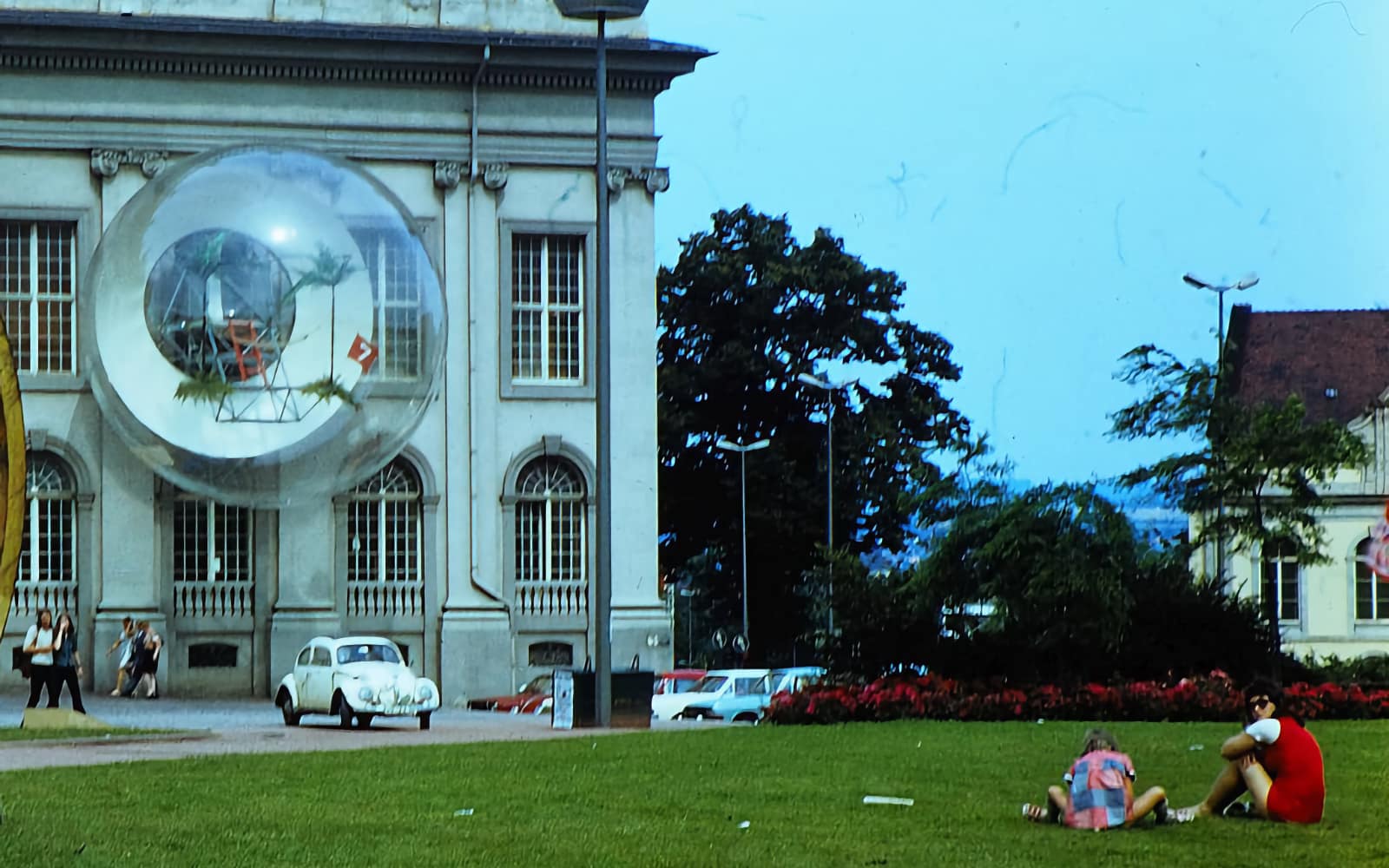Downloads
DOI:
https://doi.org/10.47982/spool.2023.1.01Keywords:
Design and research, art, art in architecture, Artistic Research, artistic knowledge, artistic experiment, reflexivity, Reflexive Design, repetition, differenceAbstract
The potential of implicit architectural knowledge extends beyond the realm of sciences and technology. It is worthwhile to examine its role in art, artistic practices, and artistic knowledge. This article explores several practical examples from art and architecture, spanning the 20th and 21st centuries. These examples shed light on artistic practices that, apart from enhancing designerly qualities and fostering a reflexive approach, may have a significant research impact in architecture. The methods, processes, and topics of these examples are examined, and their potential for critical improvement is highlighted. Particularly, the concept of ‘not-knowing’ is emphasized as a valuable asset for addressing contemporary and future challenges, not limited to architecture.
How to Cite
Published
License
Copyright (c) 2023 Valerie Hoberg

This work is licensed under a Creative Commons Attribution 4.0 International License.

References
Beck, U. (1996). Wissen oder Nicht-Wissen? Zwei Perspektiven „reflexiver Modernisierung.“ In U. Beck, A. Giddens, & S. Lash (Eds.), Reflexive Modernisierung: Eine Kontroverse (pp. 289-315). Suhrkamp.
Bertram, G. W. (2018). Kunst als menschliche Praxis: Eine Ästhetik. Suhrkamp.
Bippus, E. (Ed.). (2009). Kunst des Forschens: Praxis eines ästhetischen Denkens. Diaphanes.
Borgdorff, H. (2012). The production of knowledge in artistic research. In M. Biggs & H. Karlsson (Eds.), The Routledge companion to research in the arts (pp. 44-63). Routledge.
Borries, F. von (2010). Klimakapseln. Suhrkamp.
Bourdieu, P. (1992). Thinking Relationally. In P. Bourdieu & L. J. D. Wacquant, An invitation to Reflexive Sociology (pp. 224-235). The University of Chicago Press.
Buchert, M. (2014). Reflexive Design? Topologies of a research field. In M. Buchert (Ed.), Reflexive Design: Design and research in architecture and landscape (pp. 24-49). Jovis.
Buchert, M. (Ed.). (2020). Shaping design: Media of architectural conception. Jovis.
Buchert, M. (Ed.). (2021). Intentions of Reflexive Design: Design and research in architecture and landscape. Jovis.
Buchert, M. (Ed.). (2022). Products of Reflexive Design: Design and research in architecture and landscape (pp. 14-33). Jovis.
Busch, K. (2016). Wissen anders denken. In K. Busch (Ed.), Anderes Wissen: Schriftenreihe der Merz Akademie (pp. 10-32). Fink. DOI: https://doi.org/10.30965/9783846758984
Dyrssen, C. (2012). Navigating in heterogeneity: architectural thinking and art-based research. In M. Biggs & H. Karlsson (Eds.), The Routledge companion to research in the arts (pp. 223-239). Routledge.
Giedion, S. (1992). Raum, Zeit, Architektur: Die Entstehung einer neuen Tradition. Artemis.
Gil, I., Garcia-Abril, A., & Mesa, D. (2021). Iker Gil in conversation with Ensamble Studio. In I. Gil (Ed.), Radical logic: On the work of Ensamble Studio (pp. 49-164). MAS Context.
Henke, S., Mersch, D., Meulen, N. van der, Strässle, T., & Wiesel, J. (2020). Manifesto of Artistic Research: A defense against its advocates. Diaphanes. DOI: https://doi.org/10.4472/9783035802665
Hoberg, V. (2021). Alienating interpretations. Artistically articulated intentions. In M. Buchert (Ed.), Intentions of Reflexive Design: Design and research in architecture and landscape (pp. 122-137). Jovis. DOI: https://doi.org/10.1515/9783868599695-008
Hoberg, V. (2022). Productive distances. In M. Buchert (Ed.), Products of Reflexive Design: Design and research in architecture and landscape (pp. 84-99). Jovis. DOI: https://doi.org/10.1515/9783868598346-005
Höfler, C. (2020). Über die Wirkmacht der Linie. In C. Barlieb & L. Gasperoni (Eds.), Media Agency: Neue Ansätze zur Medialität in der Architektur (pp. 69-99). Transcript. DOI: https://doi.org/10.1515/9783839448748-005
Höppner, M., & Malcherek, J. (2002). Entwicklung des Selbstverdichtenden Betons für das Science Center Wolfsburg und Umsetzung in die Transportbetonpraxis. Beton-Informationen Spezial, 3, 17-21.
Frayling, C. (1993). Research in art and design. Royal College of Art. Research papers, 1. [Online] (https://researchonline.rca.ac.uk/384/3/frayling_research_in_art_and_design_1993.pdf).
Gamm, G. (2007). Vom Wandel der Wissenschaft(en) und der Kunst. In D. Mersch & M. Ott (Eds.), Kunst und Wissenschaft (pp. 35-51). Fink. DOI: https://doi.org/10.30965/9783846741726_003
Jung, E. (2016). Die Kunst des Wissens und das Wissen der Kunst. In J. Siegmund (Ed.), Wie verändert sich Kunst, wenn man sie als Forschung versteht? (pp. 23-43). Transcript. DOI: https://doi.org/10.1515/9783839432167-002
Kirchengast, A., & Moravánszky, Á. (Eds.). (2011). Experiments: Architecture between sciences and the arts. Jovis.
Lüthy, M. (2017). Serialität als Selbstreflexion. In V. Krieger & S. Stang (Eds.), Wiederholungstäter: Die Selbstwiederholung als künstlerische Praxis in der Moderne (pp. 19-28). Böhlau Verlag. DOI: https://doi.org/10.7788/9783412508470.19
Mersch, D. (2009). Kunst als epistemische Praxis. In E. Bippus (Ed.), Kunst des Forschens: Praxis eines ästhetischen Denkens (pp. 27-47). Diaphanes.
Polanyi, M. (1985). Implizites Wissen. Suhrkamp.
Radić, S., & Fujimoto, S. (2016). Correspondence with Sou Fujimoto. In S. Radić (Ed.), Bestiary (pp. 298-307). Toto Shuppan.
Rheinberger, H.-J. (2003). Das Wilde im Zentrum der Wissenschaft. Gegenworte, 12, 36-38.
Rheinberger, H.-J. (2005). Iterationen. Merve.
Schrijver, L. (Ed.). (2021). The Tacit Dimension: Architecture knowledge and scientific research. Leuven University Press. (https://doi.org/10.2307/j.ctv1mgm7ng) DOI: https://doi.org/10.2307/j.ctv1mgm7ng
Siegmund, J. (Ed.). (2016). Wie verändert sich Kunst, wenn man sie als Forschung versteht? Transcript. DOI: https://doi.org/10.1515/9783839432167
Slager, H. (2009). Art and method. In J. Elkins (Ed.), Artists with PhDs: On the new Doctoral Degree in Studio Art (pp. 49-56). New Academia Publishing.
Zitko, H. (2014). Reflexion und ästhetische Wahrnehmung. Zum schwierigen Verhältnis von Theorie und Praxis in der Kunst. In H. Zitko (Ed.), Theorien ästhetischer Praxis: Wissensformen in Kunst und Design (pp. 97-113). Böhlau. DOI: https://doi.org/10.7788/boehlau.9783412211523.97



